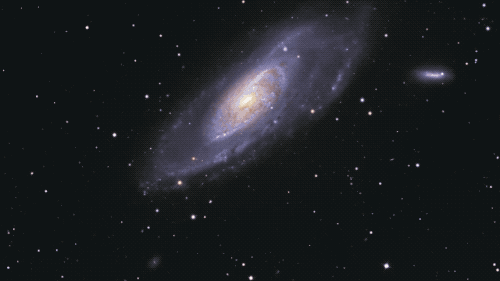What You Said: Your Physics Questions, Explained
You told us which physics concept has always stumped you. Two physicists weighed in.

 This story is part of our summer Book Club conversation about Stephen Hawking’s 1988 book ‘A Brief History of Time.’ Want to participate? Sign up for our newsletter or call our special voicemail at 567-243-2456.
This story is part of our summer Book Club conversation about Stephen Hawking’s 1988 book ‘A Brief History of Time.’ Want to participate? Sign up for our newsletter or call our special voicemail at 567-243-2456.
When we chose A Brief History of Time by Stephen Hawking for our summer Book Club, we knew it wouldn’t be the lightest read. But we also knew it would be worth tackling those complex subjects and ideas together, and unraveling the mysteries in our universe. With the help of our two readers, physicists Priya Natarajan and Clifford Johnson, we dove into some of the physics concepts that have always stumped us. Read their answers to your questions below, and tweet us your questions, or ask them in a voicemail by calling 567-243-2456.
how can all stellar objects in the universe be moving away from each other?
don’t some move parallel, others toward?
this idea makes my head hurt
thank you— Michael Griffin (@IsawInfo38) July 17, 2018
Priya Natarajan: Oh! Totally, this is a pretty difficult concept to visualize. The easiest way to think about it is to revert to the usual analogy that astronomers deploy—imagine the entire universe to be a sheet with galaxies painted on it. It is the sheet that expands, so space itself expands. This is what we mean when we say the universe expands; the distance between galaxies increases. Remember, the distances between stars inside a galaxy do not increase with the expansion of the universe. They just have random motions but are held together by the gravity of the galaxy, mostly the gravity provided by the unseen dark matter in a galaxy. I love this video that explains the concept nicely.
#scifribookclub if two people moving at high relative speeds each perceive the other as experiencing time “slower” then when one of them slows to match the other why don’t their time experiences “sync up”? Why do their clocks actually not match?
— Adamantine Alex (@Mezentine) July 17, 2018
Clifford Johnson: For their clocks to match up, they’d have to have had similar histories, but they have not. One has experienced an acceleration to slow down while the other has not. So, the two particles haven’t had equivalent histories. This is just like the case of astronauts who’ve been in orbit for a while: They’ve been higher in the earth’s gravitational field where time runs more quickly compared to how it runs on Earth (by a tiny, but measurable, amount). When they come back to Earth, they are very slightly older than they’d have been if they’d never gone. They had slightly more ticks on their clock. They can’t give those ticks back!
The idea that the nature of forces at the sub-atomic level involves a process of particle exchange – have never found a satisfactory way of explaining it other than “the universe is like that, that’s what the force is”.
— Graham Yapp (@GrahamYapp) July 17, 2018
Clifford Johnson: Roughly, speaking, the real test of any scientific idea or model about how the world works is whether it gives predictions that can be confirmed by experiments. The particle exchange idea turns out to be the best model we have, as its predictions have been confirmed with spectacular precision with many decades of experiments. So, the universe does seem to be like that, or at the very least, more like that than any other model we’ve come up with so far!
Priya Natarajan: Here is a nice YouTube video that explains the nature of sub-atomic forces, real and virtual particles…. Hope you find it useful, too.
Johanna Mayer is a podcast producer and hosted Science Diction from Science Friday. When she’s not working, she’s probably baking a fruit pie. Cherry’s her specialty, but she whips up a mean rhubarb streusel as well.